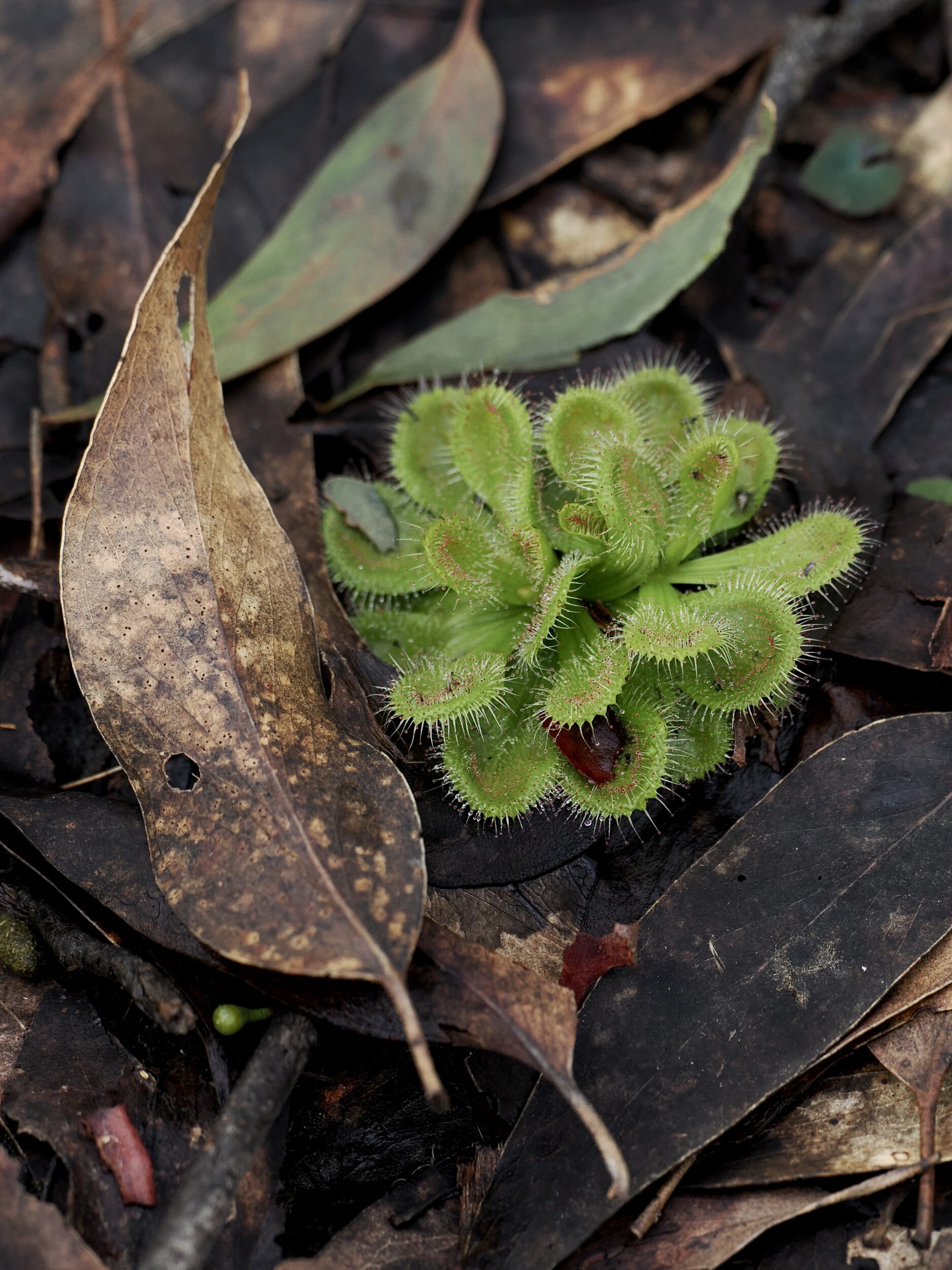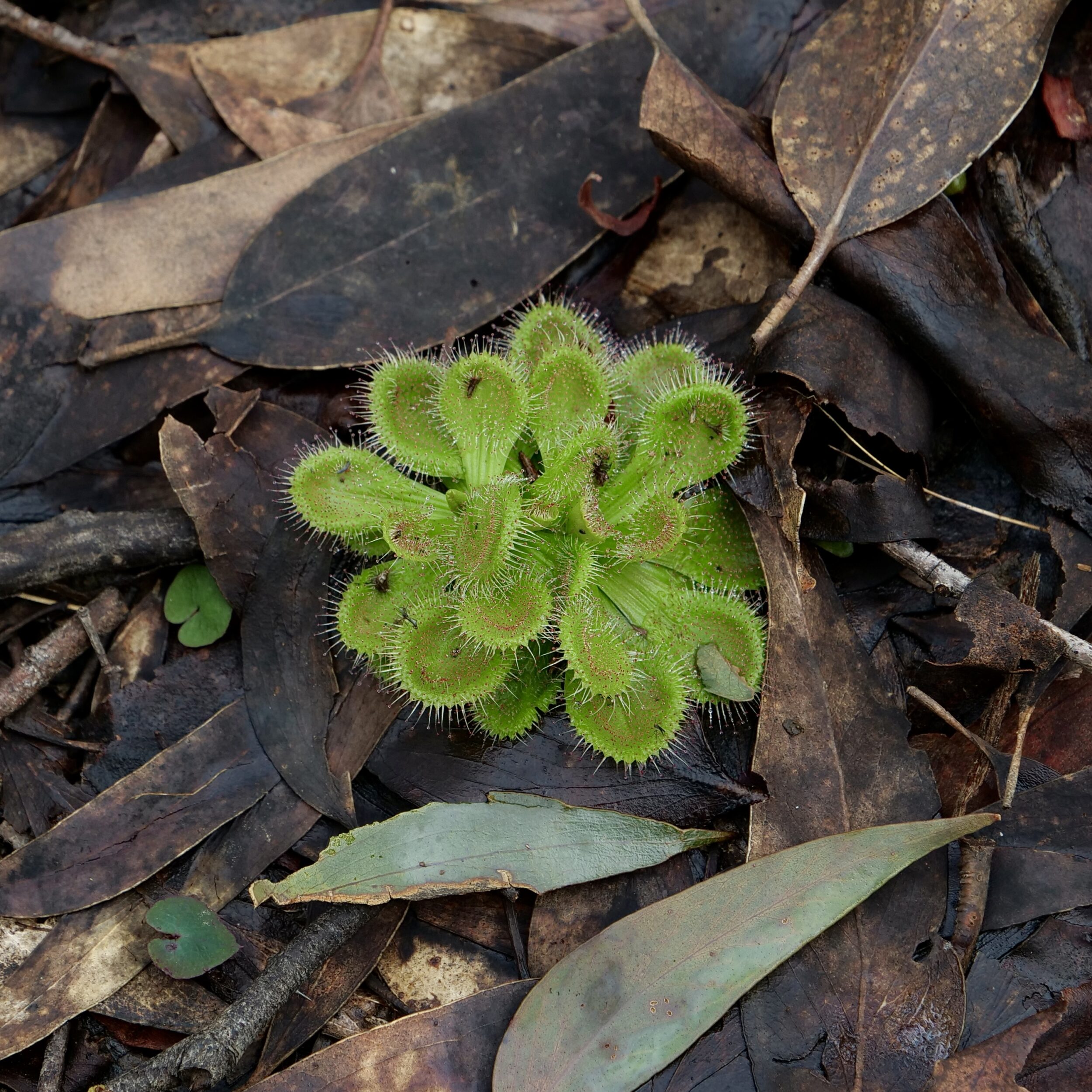Even within a single vicinity, different Drosera species can be remarkably different from each other – in size, colour, and general appearance.
However, this description fits all “sundews”:
Sundews are “flypaper” plants that trap prey in sticky hairs on their leaves. They make up one of the largest groups of carnivorous plants. Long tentacles protrude from their leaves, each with a sticky gland at the tip. These droplets look like dew glistening in the sun, thus their name. The glands produce nectar to attract prey, powerful adhesive to trap it, and enzymes to digest it. Once an insect becomes stuck, nearby tentacles coil around the insect and smother it.
I am indebted to the USA’s National Wildlife Federation for its succinct description.
The Federation was founded by a cartoonist during the Great Depression.
Nearly nine decades later, it has an interesting website; its focus, however, is entirely on North America.
For more information on Drosera, the relevant Wikipedia entry is a much better source; it is, however, in need of updating.
As I type, in 2024, the number of “known” sundew species is well north of 200, and constantly rising; a single 2023 ABC News story related how “citizen scientists” on “social media” had found four “new” WA species.
All Drosera in this series were photographed on the floor of one particular South Australian stringybark forest on a single midwinter day.
The next post’s heroes have an altogether “fiercer” appearance, but I suspect that “today’s hero” is in fact no less effective at bringing its “victims” to a truly sticky end.
One (European) study has shown that in a suitably “prey-rich” place, sundews can devour literally millions of insects within a single hectare!

